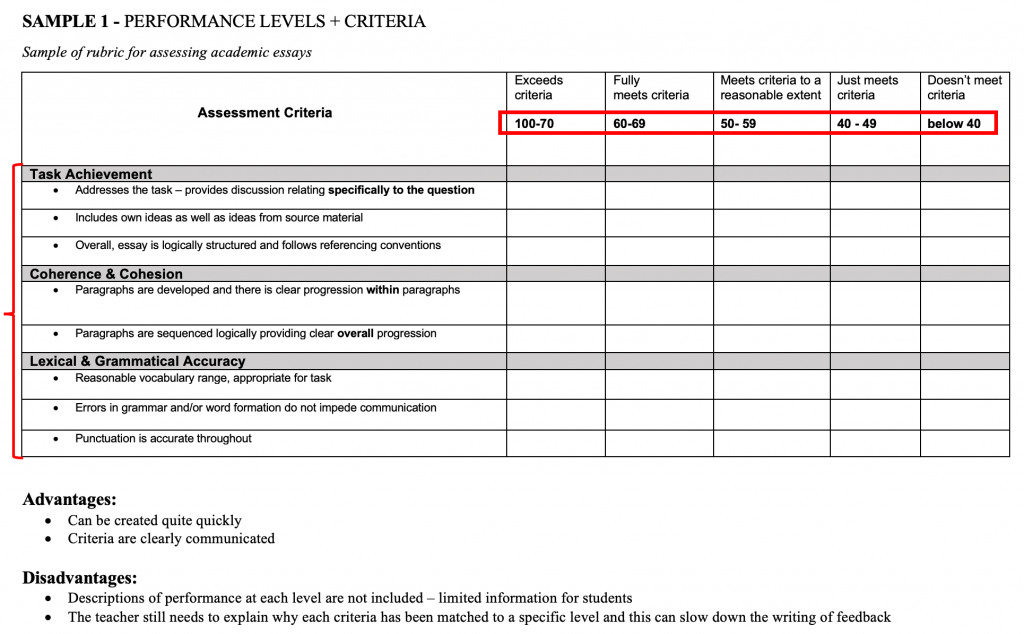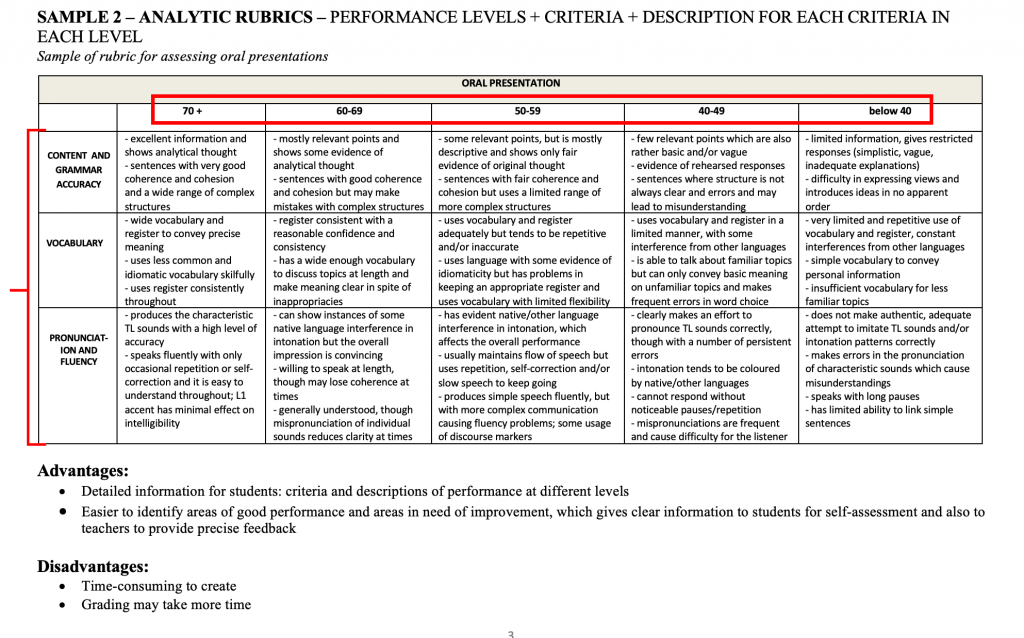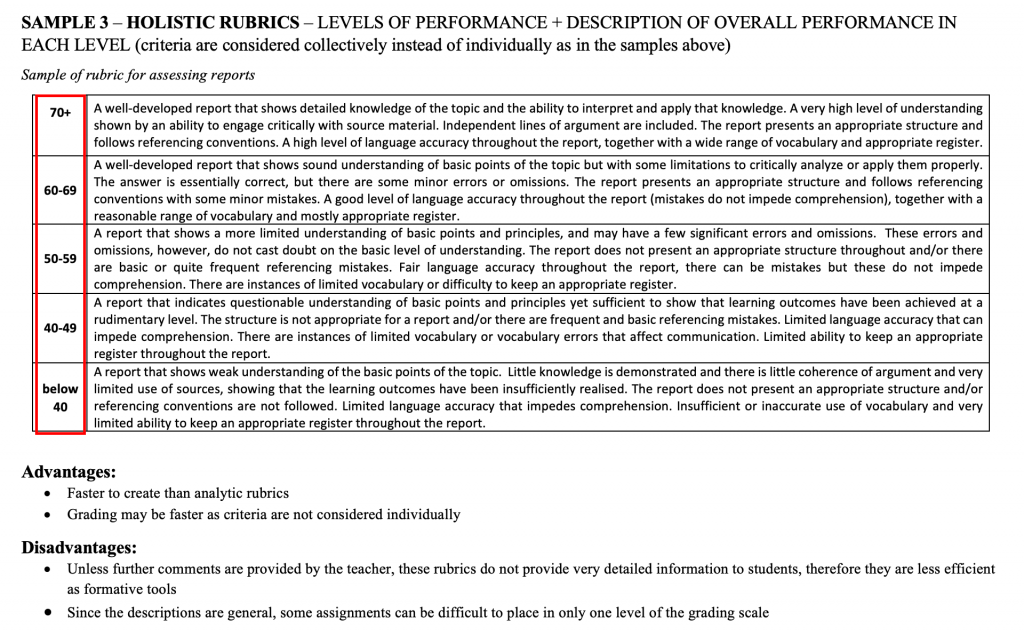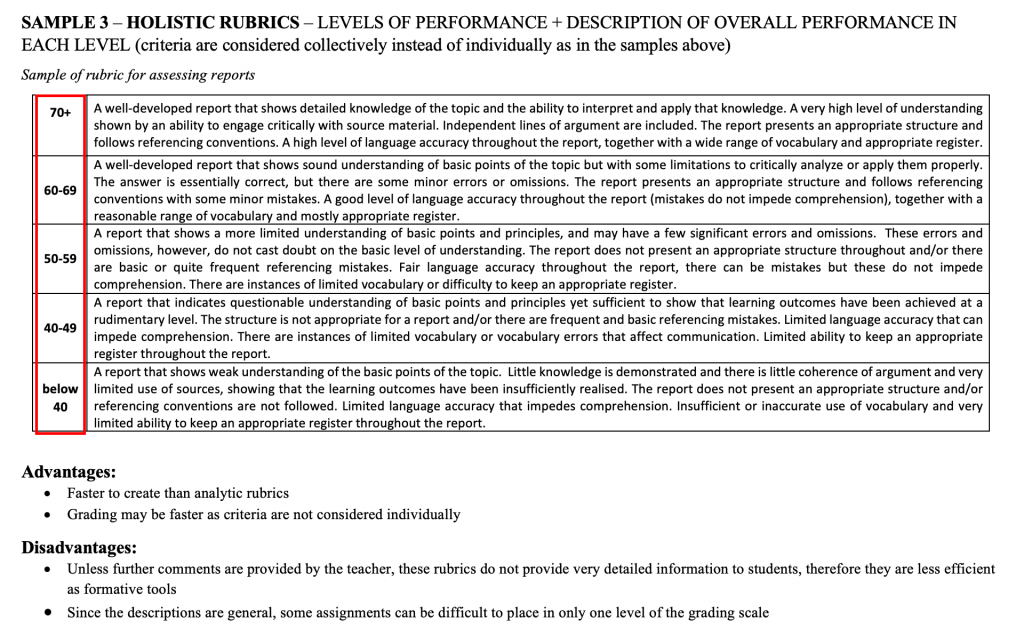TEACHING & LEARNING
COPENHAGEN BUSINESS SCHOOL
Rubrics can be described as formalized scoring systems made up of specific evaluation criteria usually developed by teachers or learning designers to assess and evaluate a student’s effort in a given assignment or task. A rubric is typically handed out together with an assignment or activity description, clarifying the desired learning objectives for the course and allowing students to reflect on the evaluation criteria and how to apply them to the activity at hand.
When developing a rubric, a teacher must consider a) the intended learning outcomes of the course, b) a marking or grading scale that addresses the highest through to the lowest levels of performance and provides narrative descriptions of each of these and c) a description of (un)desired characteristics. The assessment and feedback in a course or activity should be informed by taking the programme level perspective into consideration – for example, what is the assessment and feedback practice across the study programme? Are there any horizontal or vertical links between activities or assignments in the study programme? The programme level perspective can help to make sure that students are not being over-assessed when progressing through their courses, and that the assessment and feedback that students receive are inclusive, authentic and varied and there is a balance between formative and summative assessment.
ntroduce your students to the use of rubrics and let them ask questions before you hand out the assignment description together with your rubric. When students have handed in the assignment, assess each assignment based on your rubrics – this can either be done online and semi-automatically or manually (see an example below). The student will receive feedback based on the rubric and possible marks/points related to the feedback. It is also possible to ask students to work in groups and apply rubrics to an exemplar and create a space for student discussion of this experience.
Developing a rubric takes time and effort, but it may be able to save you time in the long term. Once you have created your rubric it can be re-used for the same specific tasks or activities. Furthermore, rubrics work well in combination with peer feedback, where the students give feedback to each other’s work based on rubrics and evaluation criteria that you have developed. In FeedbackFruits Peer Reviw tool, you have the opportunity to set up your own rubrics.
In Canvas, you are able to create rubrics for a specific assignment and then give feedback to students using the rubrics via the SpeedGrader feature. Watch how you can work with rubrics and SpeedGrader in Canvas HERE.
Rubrics are effective for supporting the students’ learning and self-efficacy by establishing the expectations for a specific task or activity and clarifying how each student can advance. It also helps students identify their current performance level and what they need to improve, as this is evident in the formulation for each criterion. The evaluation criteria that the rubric is based on can be either task-specific or learning objective-specific; when to use which type is based on the context and are dependent on the other factors of the course, such as the exam format, other teaching activities in the course and student experiences with rubrics.




Resources
Rubric Library from RCampus (link)
Mertler, C.A. (2001). Designing Scoring Rubrics for Your Classroom. Practical Assessment, Research & Evaluation, 7, 1-10.
Moskal, Barbara M. (2000). Scoring Rubrics: What, When and How?, Practical Assessment, Research & Evaluation, 7, Article 3.
Popham, J. W. (1997). What’s Wrong – and What’s Right – with Rubrics. Educational Leadership. 55(2). 72-75.
University of Reading (2018): https://sites.reading.ac.uk/wp-content/uploads/sites/25/2018/10/UoR-Rubrics-guide-18-2.pdf